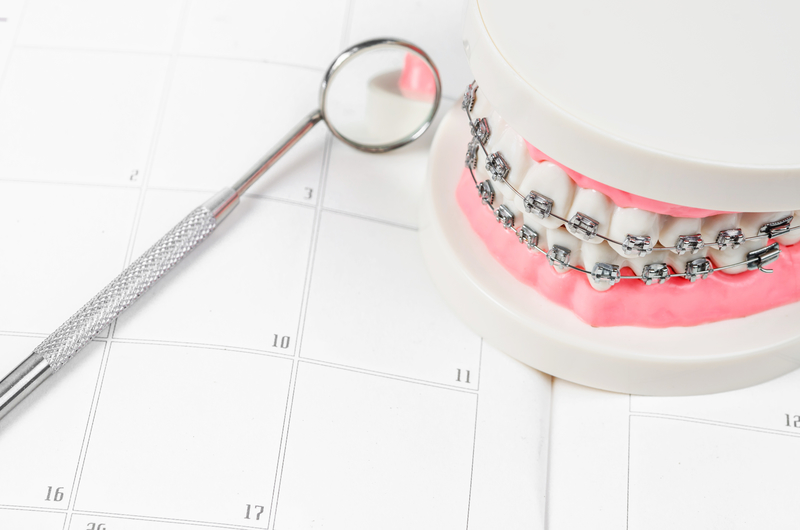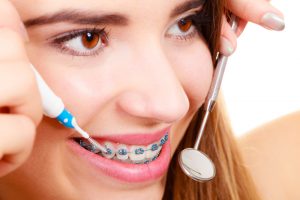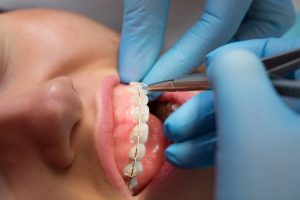Orthodontic Appointment: What to Expect
Common Questions About Child Orthodontics
November 20, 2018Keeping Braces Clean
December 6, 2018
Children, teens and adults will have to have an orthodontic consultation to see if they need braces. Once treatment is decided on, you may wonder what that first appointment will be like, especially if you get appliances bonded to your teeth. Find out what to expect with the consultation, first appointment and adjustment appointments!
The First Orthodontic Appointment
If you want a straighter smile, you want to visit an orthodontist. This person is a trained professional in straightening the teeth as well as correcting bite and alignment issues. Children have appointments before age 10 to adjust bite and alignment. Teens and adults will generally have orthodontics—or braces—to straighten the permanent teeth that are already in the mouth. No matter the age or need, your first orthodontic appointment will focus on planning an orthodontic treatment.
At the first orthodontic appointment, photographs are taken of the teeth so you can see your transformation at the end of treatment. We also take x-rays of the teeth so that we can assess internal jaw and teeth structures. Based off of these images and an oral examination, your treatment will be planned with the orthodontists. Before the end of the appointment, you will have impressions taken of your teeth to have your appliance made correctly.
If you choose Invisalign treatment, you will have your scans done digitally and you will receive aligners that you switch out weekly. Those will stay in your mouth 20-22 hours and will fit like a snug mouth guard. For metal, ceramic or lingual braces, you will have the brackets bonded to your teeth in a second appointment. A metal wire will pass through the brackets.

Follow-Up Visits and Ending Visit
Orthodontics is very straightforward and easy on your schedule. The most time you will have to take out of your day with orthodontics is when you get braces fitted to your teeth and when they are removed. This is only because brackets and wires must be placed on your teeth in very exact ways, and removed meticulously as well. Brackets and wires will stay on your teeth 18-24 months, so we want the process done correctly.
The first visit and your last orthodontic appointment will be the ones that are different than all the rest. Your first visit will start your journey to a healthier, straighter smile. Your teeth will have to adjust and you will have to get used to the braces. All the following visits every 4-6 weeks will be adjustment visits. This is when the orthodontist examines your smile to see how well your teeth are shifting into a straighter position. Rubber bands and attachments to the orthodontic appliance can be added if stubborn teeth or severely crooked teeth need to get more a nudge.
At these appointments, you will have your bracket bands removed and will receive a new, clean set for your mouth. It can be the same color or you can switch your colors at each adjustment appointment. If there are signs of tooth erosion, staining or decay, we may suggest visiting a dentist and changes to your oral hygiene routine. These visits are generally quick, but are ones you don’t want to skip, as they are needed to stay on track with your teeth straightening.

Differences Compared to Dental Appointments
Dentists and orthodontists are not the same, even though many people think they do the same work. Dentists primarily focus on detecting, preventing and treating cases of tooth decay, gum disease (including gingivitis) and oral health diseases. They do this through biannual dental cleanings and comprehensive exams that the American Dental Association recommends for every person from infancy.
That means, at basic dental appointments, you can expect a hygienist to clean your teeth meticulously with flossing, scraping, polishing, brushing and buffing. A dentist will examine your teeth and gums for signs of decay and disease and you will have x-rays taken to detect internal decay. When tooth decay or gum issues are detected, follow-up appointments are needed to remove the decay through procedures and fill the tooth cavity with composite resin material.
At your orthodontic appointments, an orthodontist can spot signs of decay or disease because they have been trained in the same oral health courses. In fact, orthodontists actually did the 4 years of undergraduate school, plus 4 years of dental school just like dentists do. However, they go on to do 2-3 more years of orthodontic school, training and fellowships to correct bite, alignment and how your teeth look. Essentially, orthodontics changes the look of your teeth while dentists help you improve the health of your teeth. Many people need both a dentist and an orthodontist to achieve a beautiful, straight smile.
Do You Need Orthodontics?
Not everyone will have an orthodontic appointment if they don’t ever have braces or a similar mouth appliance. However, the American Association of Orthodontics recommends that patients have their first orthodontic appointment between age 7 and 8. This is a time when baby teeth are falling out and adult, permanent teeth are coming into the mouth. Orthodontists can see how bite and alignment are situated and if they need adjustment to prevent speech and eating problems.
These professionals can also provide child orthodontics to prevent dental problems if the adult teeth seem to be coming into the mouth in the wrong place or at the wrong angle. Children do the best with orthodontics, because the jaws are still growing. This makes them more malleable, and the teeth and jaws can more easily be placed in the correct position in a shorter amount of time. Orthodontic treatment can happen at any age, and isn’t restricted solely to the childhood or teen years. If you want a better smile, consider scheduling your orthodontic appointment by calling Hardy Pediatric Dentistry & Orthodontics at (720) 887-6003!